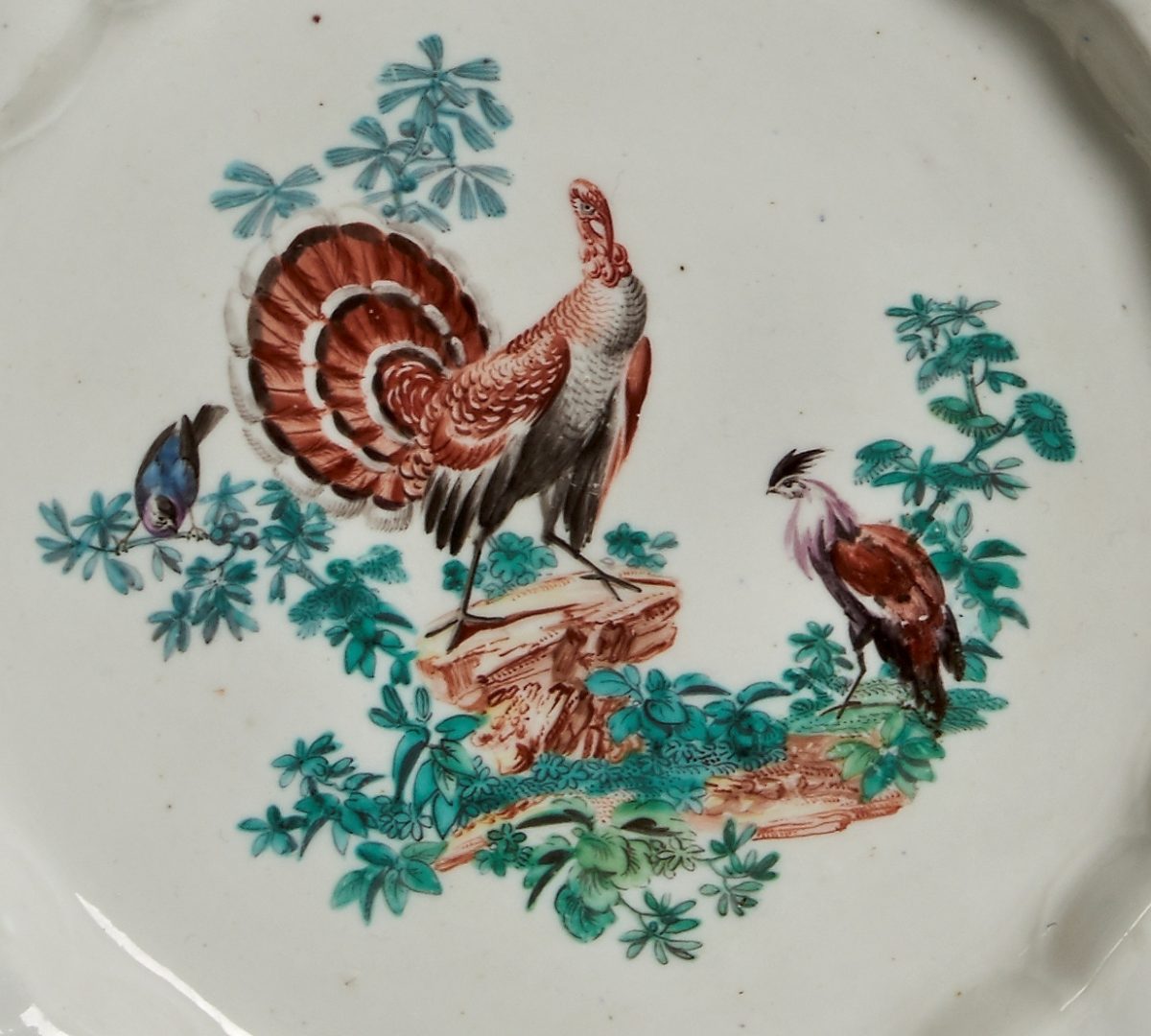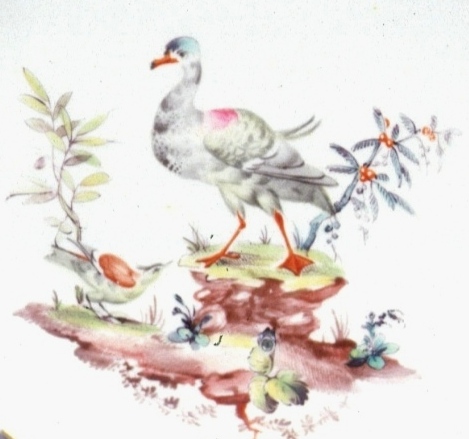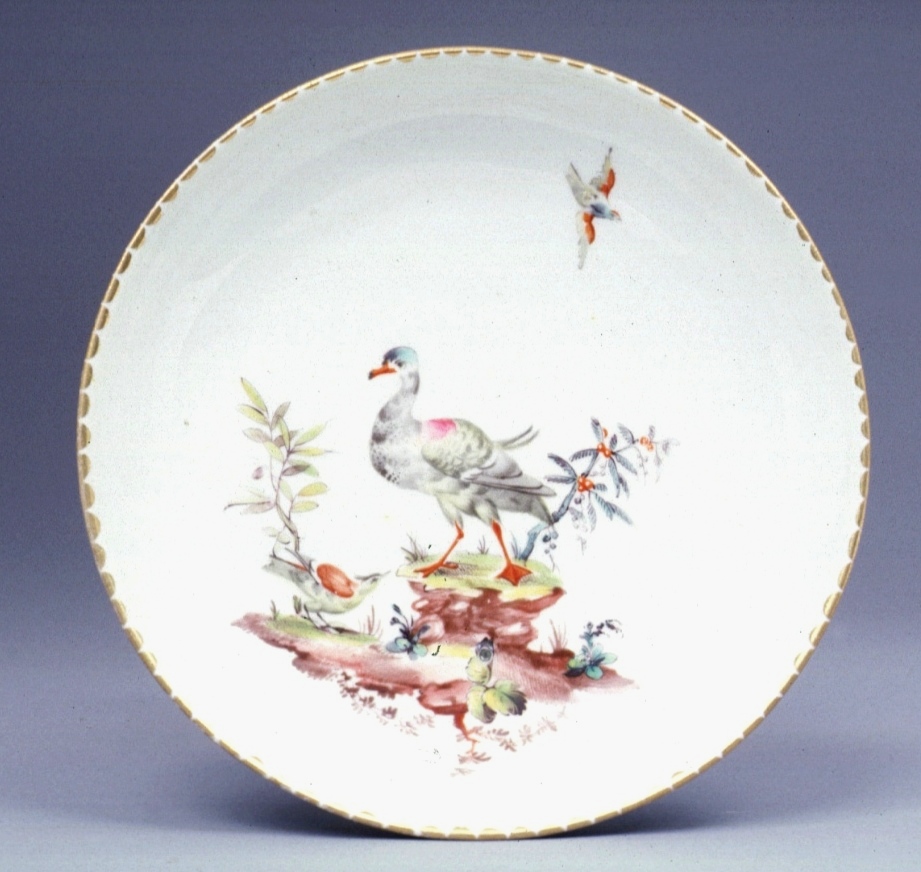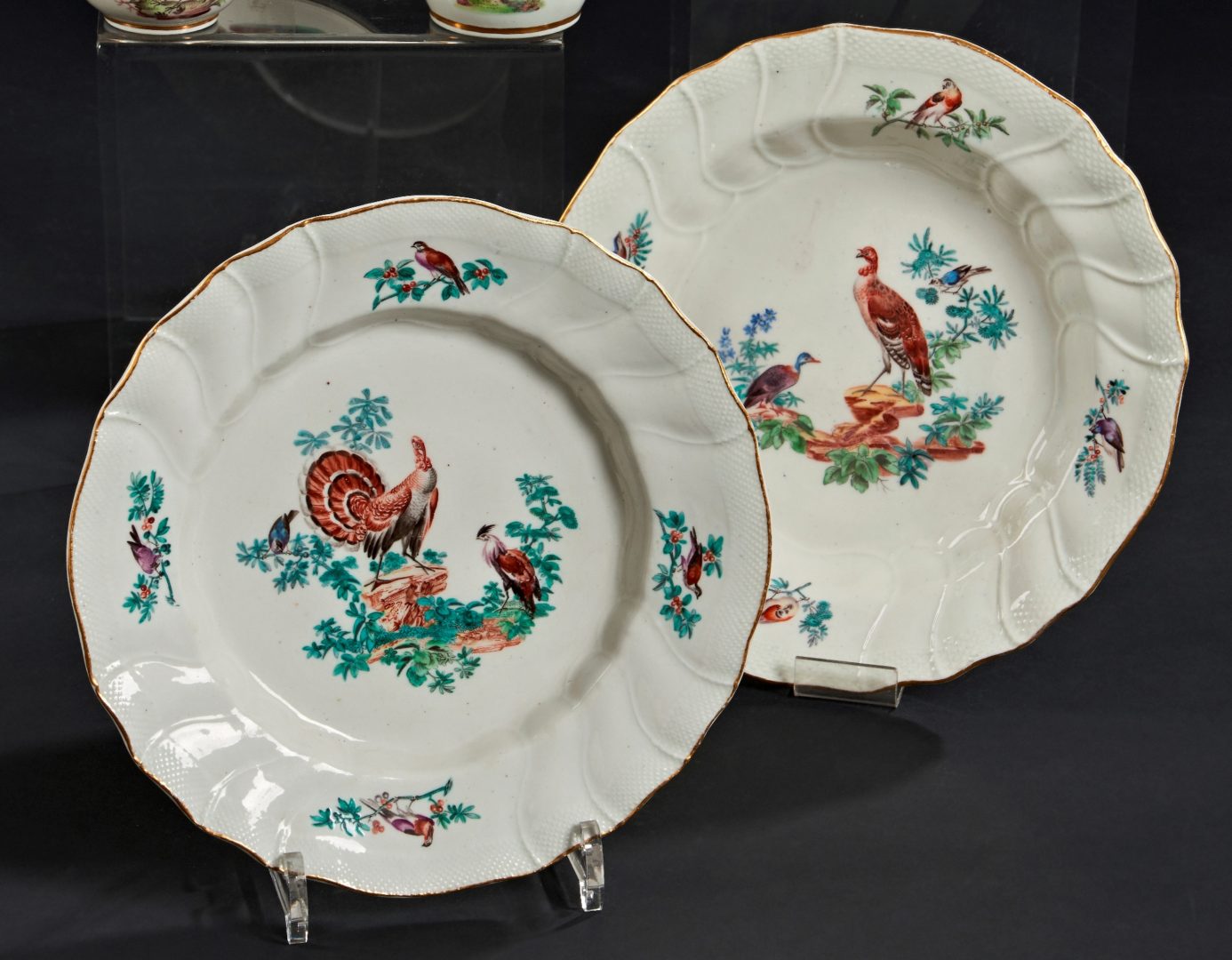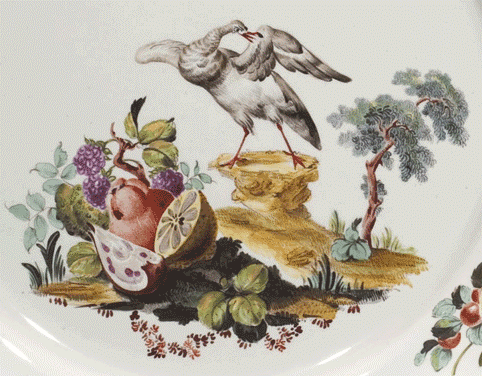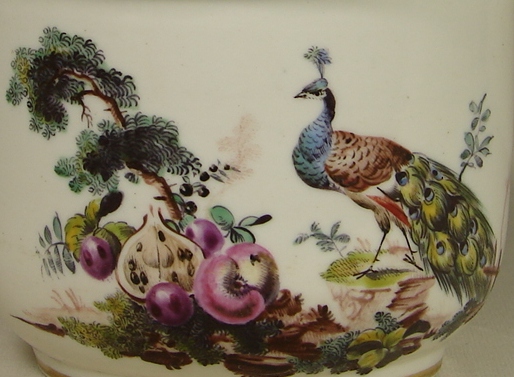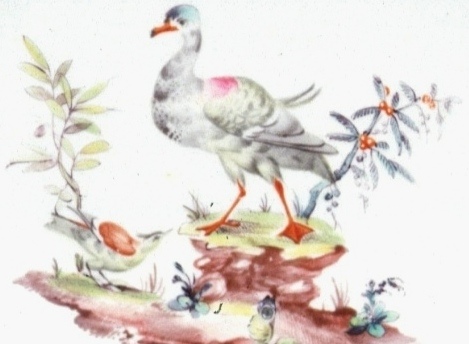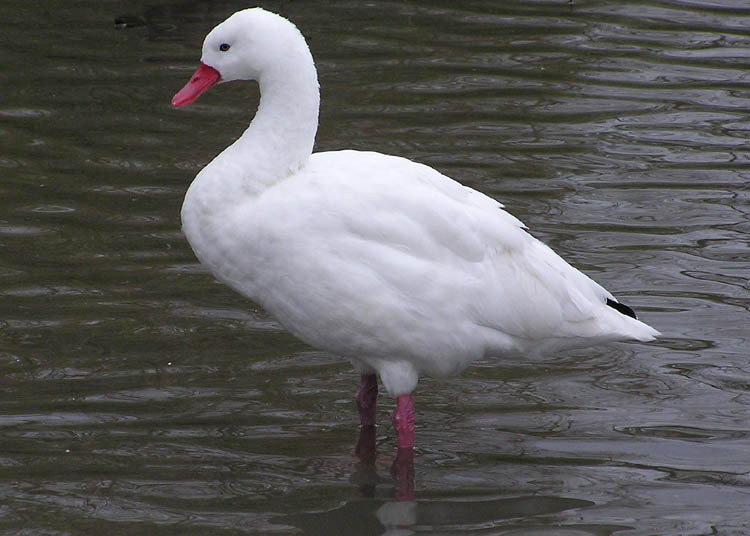1b Detail of a soft-paste Tournai plate with polychrome decoration showing a turkey standing on a rock elevated above a terrasse of greenery, with two birds on either side. It appears on one of a pair of plates (see 1a), marked on the reverse with a gold tower (second period, c. 1763-1774). © Bruno Simon/Pescheteau-Badin Auctioneers, Paris.
Similar motifs can be seen on Sceaux faience (3, 5) and Mennecy porcelain (4) that Fidelle Duvivier decorated in France, c. 1766-68.
“13 – Saucer, ca. 1770. French, Tournai, soft-paste. Gift of Martha and Henry Isaacson. 76.138.” Unmarked. Diam.
Auctioned on 18 March 2016, lot 86, by Pescheteau-Badin, Hôtel Drouot, Paris.
© Bruno Simon/Pescheteau-Badin Auctioneers, Paris.
I believe it was decorated by Fidelle Duvivier c. 1770 during his first stay in England when he was working for the Derby porcelain manufactory. Duvivier had come from the Sceaux manufactory, where he had worked for a couple of years, c. 1766-68 (he also decorated Mennecy porcelain during that time, as I explain in my book). The three examples below show his technique of portraying birds on small rocky plateaux with nearby cut fruits. (ii)
4 Detail of a Mennecy sugar bowl decorated by Duvivier with a peacock and cut or whole fruits, c. 1766-68.
Both 3 & 4 are shown in my book, In the Footsteps of Fidelle Duvivier (2016).
Photo: SVV Guillaume Le Floch, Paris. (iii)
But what is more difficult to identify is the subject itself. What kind of a bird do we have on the Seattle saucer?
we may just have to see a good portion of fantasy in this feathered specimen.
NOTES
(i) Mentioned on p. 44, note 51 of In the Footsteps of Fidelle Duvivier.
(ii) His birds of fantasy with cut fruits appear on two rare Derby examples, c. 1770.
See Footsteps, p. 24 (31a and 32).
(iii) This newest example from a Paris auction (2017) closely resembles the rooster (24) in Footsteps, p. 21.
(iv) The closest resemblance to an actual species that I could discover was the South American Coscoroba swan (shown below). The Wikipedia site states, “the bird has a red beak, legs and feet. They look somewhat more like geese than swans. The female looks almost identical to the male. The cygnet is a patchy color, with brown and gray hues. The coscoroba swan is also lacking the black mask that other swans have where their lores are between the eyes and beak. They look like a very small swan in body and look like a goose in the head.” Could such South American species have been brought to England in the eighteenth century, or was Duvivier inspired by an engraving?
See https://commons.wikimedia.org/wiki/Coscoroba_coscoroba#/media/File:Coscoroba_coscoroba1.jpg

